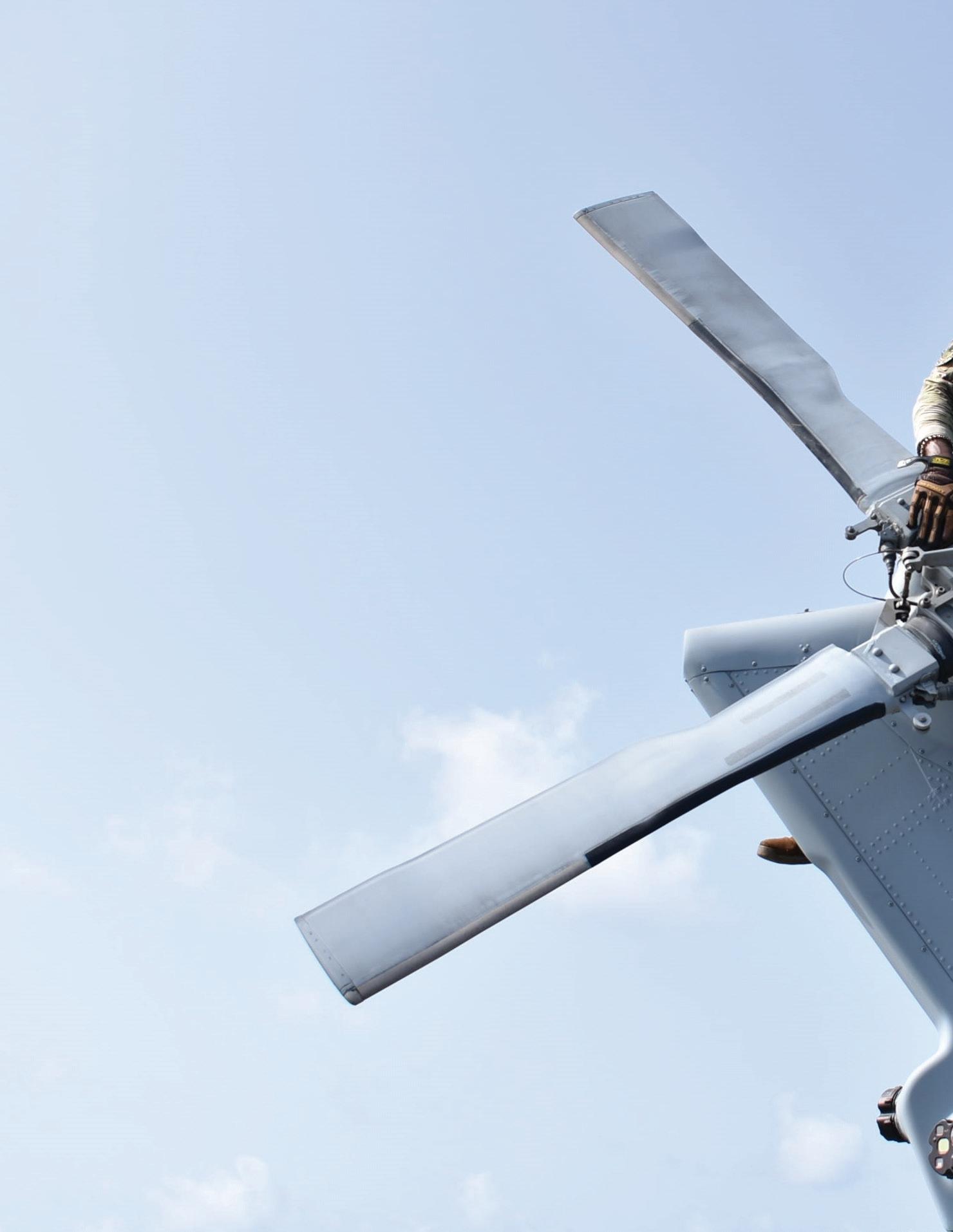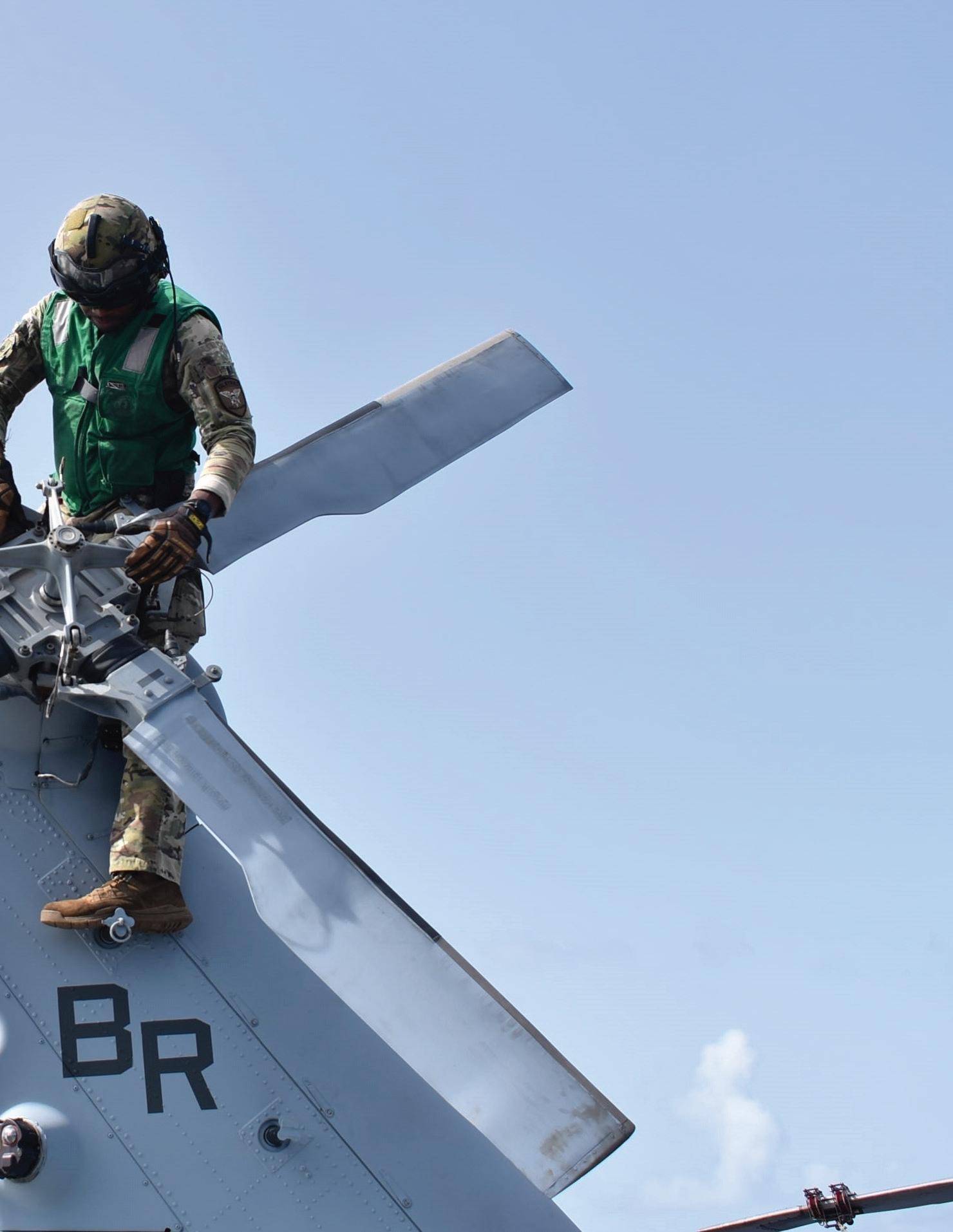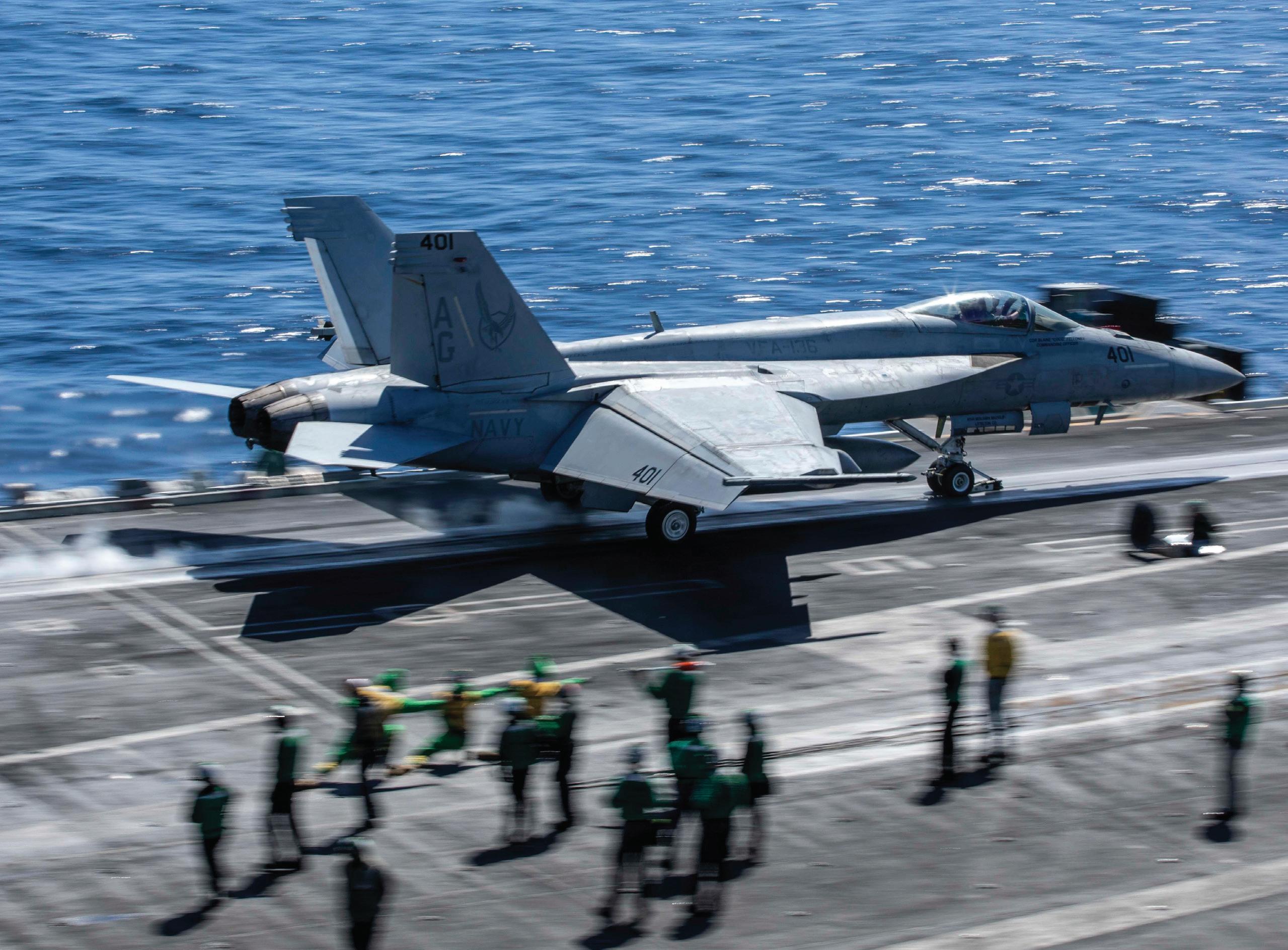
5 minute read
The Battle for Engine & Rotor Control
By Lt. Cmdr. Dave Vasquez, HSM-73
Amidst an Engine High-Side Failure under an Instrument Flight Rules (IFR) Flight Plan, an Aircrew Found Themselves Battling Engine and Rotor Speed Fluctuations Above the Foothills in Southern California.
The day’s sortie was supposed to be an easy, good-deal bag – a daytime instrument fundamental flight for a new check in, from NAS North Island (KNZY) to MCAS Camp Pendleton (KNFG). Weather was standard for Southern California in early spring – clear skies and moderate temperatures with no forecasted phenomena. The plan was simple: file a stereo route to KNFG for multiple instrument approaches, cancel IFR and return to KNZY along the coast. We conducted a thorough airway and approach study and our risk management and NATOPS briefs identified no significant risks. During our hot-seat and helicopter aircraft commander (HAC) turnover, the off-going HAC had no gripes to pass – good helicopter overall.
Takeoff and en route operations were uneventful with the occasional traffic calls from air traffic control. Within 12 miles of the airfield, we were cleared for the COPTER TACAN 21 approach at KNFG. As soon as we turned to final at nine miles out, my co-pilot said, “Uh, what is happening?” I looked down and noticed the No. 1 engine turbine gas temperature (TGT) was spiking/fluctuating and redlined to max, main rotor speed (Nr) rose to 105%; the No. 1 Torque indications were fluctuating and No. 1 gas generator speed (Ng) was unknown (we failed to look at it). Our scan was glued to TGT, Nr and Torque because they’re grouped together on our flight display, while Ng is located on the adjacent mission display. This missed review is a central debrief point later.
After onset, we immediately declared an emergency while simultaneously executing our engine malfunction in flight (EMIF) emergency procedure. Every engine malfunction in the H-60 family begins with EMIF – the first step which is control Nr and the sixth step is identify the malfunction. Naturally in the troubleshooting process, we started a controlled descent from nine miles out to set up for landing; however, our Nr excessively rose to 117%. Normal Nr is 100% and our max continuous (with exception of functional check flight) is 120%, so it was high. Even though we had verbalized EMIF, we were not executing it. We eventually got Nr under control by adding power and arresting our descent thus allowing us to identify the malfunction – No. 1 engine high-side failure.
Following EMIF, the next critical memory item for engine high-side failure is to retard the malfunctioning power control lever (PCL) and set torque 10% below the good engine or match Ng or match TGT. My co-pilot retarded the as soon as practicable. I couldn’t remember if we read the notes, but if we did and comprehended them, it would have cued us NOT to rely on TGT matching and instead use Ng matching (debrief point #1).
Following stabilization of our engine instruments, Nr control slipped away again – this time below 100%.
No. 1 PCL and paused to determine which engine instrument to balance against the No. 2 (good) engine. No. 1 Torque was still erroneous, but No. 1 TGT stabilized following PCL reduction so we elected to use TGT as our matching criteria. We broke out our pocket checklist, re-read the critical memory items and verbalized the non-memory items which was land
The lowest observed was 95% so we corrected it by adding power to get back to 100% Nr (debrief point #2). Assuming the worst case scenario and as a precaution, we elected to perform the single engine landing checklist.
KNFG was ready to catch us and emergency vehicles were standing by. We told tower we’d perform a running landing which provided us the best landing profile in a power-limited situation. My co-pilot continued to manually manipulate the No. 1 PCL to preserve TGT matching. Despite the engine still producing power (albeit degraded), I felt a self-perceived urgency to land the aircraft. As a result, my running landing was sloppy. I applied firm brake pressure while simultaneously managing directional control after collective reduction which caused pilotinduced yaw oscillations. As ground speed reduced, I was able to get the oscillations under control and taxi off the runway without incident (debrief point #3).
Emergency vehicles guided us to the transient line and we revisited our engine instruments. No. 1 TGT began fluctuating again and No. 1 Torque was more erratic compared to in-flight fluctuations. We elected to shut down the No. 1 engine; should have questioned TGT’s accuracy following its massive fluctuations after onset. Luckily TGT settled, but we bit off on it. Bottom line, always keep Ng in your scan as it’s the most reliable engine instrument when TGT and Torque are erroneous. however, TGT and Torque fluctuations remained. That drove my scan to finally look at Ng which was at 0% thus indicating a good engine shutdown. I immediately shook my head and disappointedly told the crew that I should have looked at Ng following the onset of the emergency procedure (EP). We continued our taxi to the transient line and shut the aircraft down without incident.
There are a few things to debrief here. Debrief point #1: we should have used Ng for our matching criteria. If we comprehended the notes from the EP, Ng was the most reliable signal since it doesn’t come from our enhanced digital electronic control unit (EDECU).
The EDECU provides Torque and TGT indications to the cockpit so there was some type of failure. The notes would have clued us not to use TGT as our matching criteria and we
Debrief point #2: Managing Nr must be performed until landing. It’s not a “set it and forget it” movement – it must constantly be managed. Nr control is obvious when performing an autorotation, but it’s easy to forget once it’s under control following an engine high-side failure. I didn’t take enough power out following my initial collective pull to get Nr under control. As a result, Nr dropped to 95%. Controlling Nr during EMIF isn’t a one-step process; it must constantly be managed.

Debrief point #3: Fly the aircraft safely to a complete stop. There was a selfperceived pressure to land and stop the aircraft. Airspeed and rate of descent were by the book, but I applied too much brake pressure while managing directional control. I should have gotten my lineup straight and applied less brake pressure since we had plenty of runway remaining. Again, it wasn’t unsafe, but the self-perceived urgency to stop the aircraft made for sloppy directional control.
This emergency procedure was an exercise in fundamental aviation principles and checklist discipline. Our real-world EP wasn’t executed as smoothly compared to the simulator as our aviation principles were slightly out of order and we missed valuable information in the checklist. We learned the value of preserving the order of aviate, navigate, communicate and to read/comprehend the notes in the emergency procedure. No actual EP is executed flawlessly yet we had control of the aircraft and landed it safely. We’ll absorb the lessons learned and continue to practice the learning organization principles of the naval aviation enterprise.










